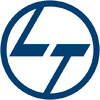Electrical Designer
40+ Electrical Designer Interview Questions and Answers

Asked in Burns & McDonnell

Q. What is the cable tray layout and how do you cable tray design, what is the input requirement, Trench layout and what is the input requirement,
Cable tray layout involves designing and arranging cable trays for efficient cable management.
Input requirements include cable type, size, weight, and routing
Trench layout input requirements include trench dimensions and depth
Design should consider cable spacing, support, and accessibility
Proper grounding and bonding should also be considered
Asked in Inch Energy

Q. What is panel?Have you worked in panel layout?
A panel is an enclosure that houses electrical components and controls. Yes, I have worked in panel layout.
Panels are used to protect electrical equipment from damage and to prevent electrical hazards.
Panel layout involves designing the arrangement of components within the panel.
Factors to consider in panel layout include ease of access, cable routing, and heat dissipation.
Examples of components that may be included in a panel are circuit breakers, relays, and switches.
Asked in Inch Energy

Q. 2.How creat a block? Proceasure of block editing?
To create a block in electrical design, follow these steps for block editing.
Open the schematic editor and draw the desired shape for the block
Select the shape and right-click to access the 'Create Block' option
Name the block and add any necessary attributes
Save the block to the library for future use
To edit the block, select it and right-click to access the 'Edit Block' option
Make the desired changes and save the updated block to the library
Asked in Inch Energy

Q. How do you move a drawing from one window to another?
To shift a drawing from one window to another, use the MOVE command.
Type MOVE in the command line
Select the drawing to be moved
Specify the base point of the drawing
Select the destination window
Specify the insertion point in the destination window

Asked in Worley

Q. What are the reference details for tray layouts?
Reference details for tray layouts include industry standards, project specifications, and manufacturer recommendations.
Industry standards such as NEMA VE 1 and NEC Article 392 provide guidelines for tray layouts
Project specifications outline specific requirements for tray layouts based on the project's needs
Manufacturer recommendations provide information on the appropriate tray size, material, and installation methods
Considerations such as cable size, weight, and routing al...read more
Asked in Ambit Power Solutions

Q. What are the methods to calculate the amperage and kilowatt rating?
Amperage and kilowatt ratings can be calculated using Ohm's Law and power formulas, essential for electrical design.
Ohm's Law: Amperage (I) can be calculated using the formula I = V/R, where V is voltage and R is resistance. Example: For 120V and 60Ω, I = 120/60 = 2A.
Power Formula: Kilowatt rating (P) can be calculated using P = VI, where V is voltage and I is current. Example: For 240V and 10A, P = 240 * 10 = 2400W or 2.4kW.
Three-Phase Power: For three-phase systems, P = √3 ...read more
Electrical Designer Jobs



Asked in Ambit Power Solutions

Q. What is the process for converting kilowatts (kW) to amps?
To convert kilowatts to amps, use the formula: Amps = Kilowatts / Voltage, considering the power factor for AC circuits.
Formula: Amps = kW / Voltage. For example, 10 kW at 240V equals 10 / 240 = 0.0417 A.
For AC circuits, consider the power factor: Amps = kW / (Voltage x Power Factor). Example: 10 kW at 240V with a power factor of 0.9 equals 10 / (240 x 0.9) = 0.0463 A.
In DC circuits, the formula simplifies to Amps = kW / Voltage since the power factor is 1.
Always ensure volta...read more
Asked in Brightsun Enigneering & Fabrications

Q. What are first angle and third angle projections?
First angle and third angle projection are two methods used in technical drawing to represent a 3D object on a 2D surface.
First angle projection is commonly used in Europe and Asia, where the object is imagined to be in the first quadrant of a Cartesian coordinate system.
Third angle projection is commonly used in North America, where the object is imagined to be in the third quadrant of a Cartesian coordinate system.
In first angle projection, the top view is placed above the ...read more
Share interview questions and help millions of jobseekers 🌟

Asked in Inch Energy

Q. What is the difference between a circuit breaker and switchgear?
CB is a device that interrupts the flow of current, while switchgear is a combination of switches, fuses, and circuit breakers used to control and protect electrical equipment.
CB is a single device, while switchgear is a combination of devices.
CB is used to interrupt the flow of current in case of overload or short circuit, while switchgear is used to control and protect electrical equipment.
Switchgear can be used for low voltage or high voltage applications, while CB is typi...read more

Asked in Hatch Associates India

Q. What are the standard sizes and lengths of cable trays?
Standard size and length of cable tray varies depending on the application and requirements.
Standard sizes for cable trays are typically 4, 6, 8, 12, 18, and 24 inches wide.
Standard lengths for cable trays are usually 10 or 12 feet long.
The size and length of cable tray needed will depend on the amount and type of cables being supported.
Consider factors such as weight capacity, corrosion resistance, and environmental conditions when selecting cable tray size and length.

Asked in ENGIE Solutions

Q. Transformers, and generator alternator working principle
Transformers and generator alternators are devices that convert electrical energy from one form to another.
Transformers work on the principle of electromagnetic induction, where a changing current in one coil induces a voltage in another coil.
They are used to step up or step down voltage levels in electrical power transmission and distribution systems.
Generator alternators, also known as synchronous generators, convert mechanical energy into electrical energy through the prin...read more

Asked in Hatch Associates India

Q. What are the different types of GI strip earthing?
Different types of earthing gistrips include plate earthing, pipe earthing, and rod earthing.
Plate earthing involves burying a copper plate in the ground.
Pipe earthing uses a galvanized iron pipe filled with charcoal and salt to improve conductivity.
Rod earthing utilizes a copper rod driven into the ground to provide a low-resistance path for fault currents.

Asked in Hatch Associates India

Q. What is the working procedure of Dialux evo?
Dialux evo is a lighting design software used by electrical designers to create professional lighting designs.
Start by creating a new project and selecting the appropriate room type
Add the necessary objects such as walls, windows, doors, and furniture
Place light sources like lamps and luminaires in the design
Set up the lighting parameters such as intensity, color, and direction
Run calculations to analyze the lighting performance and make adjustments as needed
Generate reports ...read more

Asked in Alliance India

Q. Which code is used in the USA?
The National Electrical Code (NEC) is used in the USA.
The NEC is updated every three years.
It is published by the National Fire Protection Association (NFPA).
The NEC covers electrical wiring and installations in buildings and structures.
It is adopted by most states and local jurisdictions in the USA.
The current version of the NEC is the 2020 edition.

Asked in Hitachi

Q. What is the difference between a UPS and an inverter?
UPS provides instant backup power during outages, while inverter converts DC power to AC power.
UPS stands for Uninterruptible Power Supply and provides instant backup power during outages.
Inverter converts DC power from batteries or solar panels to AC power for household appliances.
UPS typically has a battery backup to provide continuous power, while inverters rely on external power sources.
UPS is commonly used for critical equipment like computers and servers, while inverter...read more

Asked in VICTORINOX

Q. What is the meaning of CSD?
CSD stands for Current Source Density.
CSD is a technique used in neuroscience to analyze the distribution of electrical currents in the brain.
It helps in understanding the flow of electrical activity and identifying regions of neural activity.
CSD is often used in conjunction with techniques like electroencephalography (EEG) or electrocorticography (ECoG).

Asked in TRACKS AND TOWERS INFRATECH

Q. What is the meaning of LOP?
LOP stands for Line of Position.
LOP is a navigational term used in marine and aviation industries.
It refers to a line on a chart or map that represents the position of a vessel or aircraft at a specific time.
LOP is determined by taking bearings or angles to known landmarks or navigational aids.
By intersecting multiple LOPs, the exact position of the vessel or aircraft can be determined.
LOP is crucial for navigation and ensuring the safety of the vessel or aircraft.

Asked in TRACKS AND TOWERS INFRATECH

Q. What is the meaning of sed?
sed is a command-line text editor used for stream editing and manipulating text.
sed stands for 'stream editor'
It is used for performing text transformations on input streams or files
sed uses regular expressions to match and modify text
It can be used to search, replace, insert, delete, and transform text
Example: sed 's/old/new/g' file.txt replaces all occurrences of 'old' with 'new' in file.txt
Asked in Inch Energy

Q. 100 kv SLD on AutoCAD.
Designing a 100 kv Single Line Diagram on AutoCAD.
Create a new drawing in AutoCAD.
Use appropriate symbols for electrical components.
Draw the lines and connect the components to create the SLD.
Label the components and lines with appropriate text.
Ensure the SLD is accurate and meets all necessary standards.
Save and submit the final design.

Asked in Rheinmetall Automotive

Q. What is a star-delta starter?
Star-delta starter is a type of reduced voltage starter used in induction motors to reduce starting current.
Consists of a star contactor for starting and a delta contactor for running
Reduces starting current by initially connecting the motor windings in star configuration
Switches to delta configuration once motor reaches desired speed
Commonly used in applications where high starting current is a concern

Asked in Sobha

Q. What is the full form of OHE?
OHE stands for Overhead Equipment.
OHE is a system used in railways for supplying electricity to trains through overhead lines.
It includes components like catenary wires, droppers, insulators, and feeder pillars.
OHE is essential for the operation of electric trains, providing power for traction motors.
Regular maintenance of OHE is crucial to ensure safe and efficient train operations.
Asked in Inch Energy

Q. What is the procedure to create a group?
To make a group, identify common interests, invite potential members, establish goals and guidelines, and communicate regularly.
Identify common interests among potential members
Invite potential members to join the group
Establish goals and guidelines for the group
Communicate regularly to ensure everyone is on the same page

Asked in Sobha

Q. What do you meaning ssp
SSP stands for System Security Plan, which is a document outlining the security measures and protocols for a specific system or project.
SSP is a detailed document that includes information on security controls, risk assessments, security policies, and procedures.
It outlines how sensitive information will be protected, who has access to it, and how incidents will be handled.
Examples of components in an SSP include access control measures, encryption protocols, and incident res...read more

Asked in Schneider Electric

Q. Types of induction motors
Types of induction motors include single-phase, three-phase, squirrel cage, and wound rotor motors.
Single-phase induction motors are commonly used in household appliances.
Three-phase induction motors are widely used in industrial applications.
Squirrel cage motors have a simple and rugged construction.
Wound rotor motors allow for external resistance to be added for speed control.

Asked in Worley

Q. Tray size types and dimensions
Tray sizes vary depending on the application and can range from 2 inches to 36 inches in width.
Tray sizes are determined by the amount and size of cables or wires being carried.
Common tray sizes include 12 inches, 18 inches, and 24 inches in width.
Tray depths can range from 1.5 inches to 6 inches.
Tray materials can include aluminum, steel, or fiberglass.
Tray types include ladder, solid bottom, wire mesh, and cable tray.
Tray dimensions should be selected based on the specific ...read more
Asked in ValueMatrix

Q. What is your knowledge of relevant software?
Software knowledge is essential for an Electrical Designer to effectively design and analyze electrical systems.
Proficiency in CAD software such as AutoCAD or SolidWorks is crucial for creating detailed electrical drawings
Knowledge of simulation software like MATLAB or PSpice helps in analyzing and optimizing electrical circuits
Familiarity with programming languages like C++ or Python can be beneficial for automation and control systems design

Asked in Larsen & Toubro Limited

Q. How do you create a block?
To make a block, create a 3D model using CAD software and save it as a block. It can then be inserted into other drawings.
Create a 3D model using CAD software
Select the model and save it as a block
Give the block a name and description
Insert the block into other drawings as needed

Asked in Sobha

Q. What is TTC in railway systems?
TTC in railway stands for Time to Collision, which is a measure of the time it will take for two objects to collide if they continue on their current path.
TTC is used in railway signaling systems to prevent collisions between trains.
It calculates the time it will take for a train to reach a certain point based on its current speed and distance.
TTC is crucial for ensuring the safety and efficiency of railway operations.
Asked in Thirumoolar Software

Q. What is your domain?
I specialize in designing electrical systems for various applications, focusing on efficiency and safety.
Expertise in power distribution systems, ensuring optimal load management.
Experience with lighting design, including energy-efficient solutions.
Proficient in using CAD software for circuit design and layout.
Knowledge of industry standards and regulations, such as NEC and IEC.
Familiar with renewable energy systems, including solar and wind integration.

Asked in Zydus Group

Q. What is the use of a Star-Delta starter?
Star delta starter is used to reduce the starting current of induction motors.
Reduces starting current by initially connecting the motor windings in a star configuration and then switching to delta configuration.
Used for large induction motors to prevent damage to the motor and reduce voltage drop in the supply.
Commonly used in industries where high starting torque is required, such as in conveyor belts or pumps.
Interview Questions of Similar Designations
Interview Experiences of Popular Companies









Reviews
Interviews
Salaries
Users


















